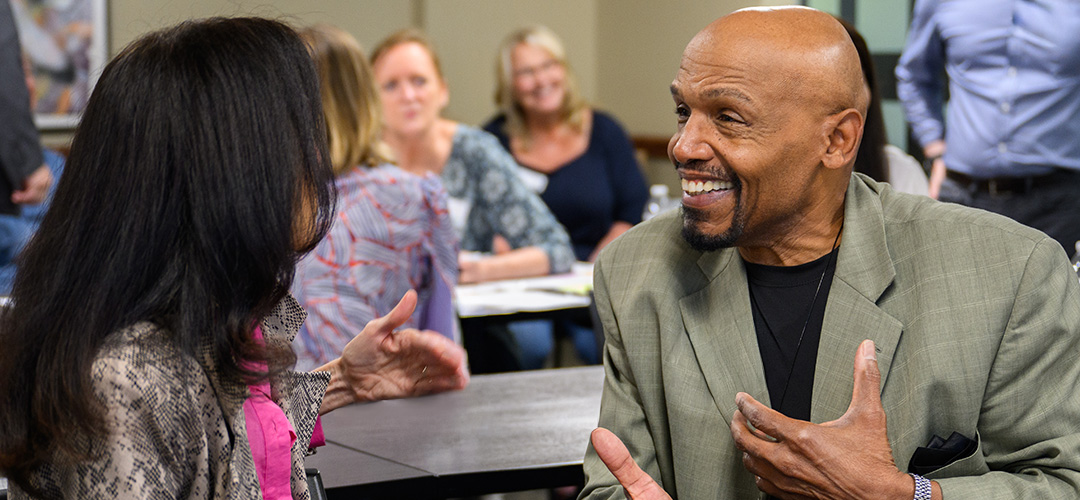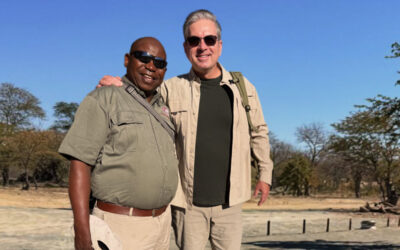Back by popular demand, our annual coaches panel webinar featured a trio of experts: master coach Stan Greene, former physician and healthcare executive Kristen Woods, and finance and biotech expert Tony Martignetti. The discussion surfaced a range of valuable takeaways, from reaffirming coaching’s core philosophy, to exploring ways to manage today’s industry stressors, to highlighting the critical role of human connection in our complex and ever-changing workplace.
Mindset Shifts for Sustainable Change
Dion Leadership grounds its work in the belief that coaching must create sustainable behavioral change. This is achieved by focusing on the leadership mindset and how leaders show up as their authentic selves in a given situation. Unlike training, which teaches models and best practices, coaching helps the individual assess options and choose the healthiest behavior to achieve a desired outcome.
A core lesson reinforced by all panelists is the crucial distinction between coaching and consulting. Coaching is not about the coach giving advice. Stan describes his client-centered style as helping leaders “reflect on the advice you’ve already given yourself but haven’t figured out how to give yourself permission to act on.” The work is anchored in specific learning objectives, moving from articulation to sustainability and measurement.
For the coaches themselves, this work is often a calling rather than just a career path. Tony’s path began with a frustration related to how leaders around him were showing up, leading him to decide to “leave the room to change the room.” Drawing on her medical background, Kristen Woods emphasized her passion for using motivational interviewing to draw out a client’s deepest motivations and co-create solutions—not telling them what to do, but helping them discover their own answers.
Finding the Right Match: Challenge Over Comfort
One of the most essential components of a successful coaching engagement is the relationship between the coach and coachee. A best practice that Dion Leadership utilizes involves allowing the coachee to select their coach from a slate of candidates via “chemistry calls.”
A key lesson learned about these initial calls is that the focus should be on challenge, not comfort. The coachee must determine if the prospective coach is someone who can challenge them in the ways needed to accomplish their goals. Stan recommends looking for “I hadn’t considered that” moments during the interview, as these indicate opportunities to stretch beyond self-imposed limits.
Tony Martinetti further defines this dynamic as compassionate accountability. It means seeing and caring deeply for the person while holding them accountable for taking action, recognizing that “growth doesn’t happen when you’re feeling comfortable.”
Navigating Today’s Stressors: Adaptability, Accountability, and Empathy
The panel shared common themes emerging from current executive coaching engagements, largely driven by chronic stress and external pressures. Kristen pointed out that leaders are experiencing heightened stress due to the pace of change, staffing shortages (especially shrinking middle management depth), and complex financial challenges (particularly in healthcare). This chronic stress manifests as burnout and compassion fatigue, which in turn degrades empathy, morale, retention, efficiency, and productivity.
In 2025 Kristen’s coaching practice has focused on four main areas for skill enhancement:
- Adaptability: Developing agile mindsets to manage ambiguity and rapid change.
- Effective Relationships and Team Accountability: Crucial for success in remote and hybrid environments.
- Strategic Vision to Concrete Next Steps: Addressing the high failure rate (70%) of organizational initiatives by aligning teams and rethinking engagement.
- Communication: Providing intentional coaching time to refine messaging and approach, recognizing that nine out of ten breakdowns are caused by miscommunication.
As leaders improve these skills, they experience less stress and return to work with greater resilience, creating a positive “feed forward loop” for their teams.
Unlocking Team Potential
When an audience member asked how to unlock potential within teams, the coaches emphasized shifting focus from specific skills to identity and vision. Tony stressed the importance of connecting deeply with people to understand their strengths and backstories (their “essence and identity”) rather than focusing only on immediate effectiveness.
A critical lesson for leaders is managing the dynamic between the “what” and the “how.” To unlock potential, the leader must be very clear about the “what”—the instinct, the objective, the end state—but must hold lightly the question of “how” the team will achieve it. Allowing people to figure out the “how” leverages the team’s diversity and potential.
Kristen provided an example of a client who successfully launched a new clinic eleven weeks early by prioritizing empathy and interdependence. She learned to “go slow in order to go fast” by pulling key stakeholders in early to collaboratively problem-solve, instead of skipping relationship-building in favor of speed.
Measuring Success and Integration
Measuring success is achieved by helping the leader gain “20/20 vision” regarding their impact. Stan defined coaching success as the leader’s ability to masterfully align their intention with their impact, using feedback from colleagues to verify if their intended actions were perceived and received as planned. It is also acknowledged that success may mean helping a coachee get “unstuck,” even if that means realizing the organizational objectives are unrealistic and choosing to leave the role.
A subtle but important distinction was made regarding culture fit. Dion Leadership uses the term Leader Integration Coaching rather than “assimilation coaching.” The goal is not merely to force an individual to fit into an “already well-oiled machine,” but to help the individual bring their unique perspectives while also ensuring the organization is committed to leveraging those skills and moving forward. A key strategic lesson is the value of implementing leader integration coaching early for new leaders (in month one or two), rather than waiting until they are already perceived as a poor fit, thereby aiding retention of senior talent.
The Human Factor in the Age of AI
Finally, the panel addressed the proliferation of AI coaching tools. The consensus was that AI can be an augmentation tool, but it cannot replace the human coach. AI is excellent at creating a map for tracking competencies and documenting commitments.
However, the human touch is required to navigate the personal and emotional territory. A coach brings the empathy, connection, and nuance that AI currently lacks. As Kristen noted, it is easier to make an excuse to an AI bot than to a human. Moreover, as Tony highlighted, we do our best thinking in community; the human coach provides a necessary sounding board and the space to explore complex issues, which is where real transformation occurs.
The dialogue concluded by affirming that coaching is often an “and, not an or” pairing with personalized training and development and group interaction for maximum impact. Ultimately, executive coaching is the intentional interrupter that helps leaders move past the daily treadmill of the next meeting or to-do item to ask if there may be a better way to approach this challenge.
If you are interested in exploring the power of coaching for a leader in your organization, please reach out to set up a complimentary exploratory call with one of our coaching experts.
Read Next
8 Leadership Lessons from an African Safari Guide
Earlier this year, I embarked on a life-changing 15-day African safari with my...
Leadership Lessons from Selling Dion Leadership
On July 31, 2025, Dion Leadership was acquired by Gallagher. We are thrilled to be...




